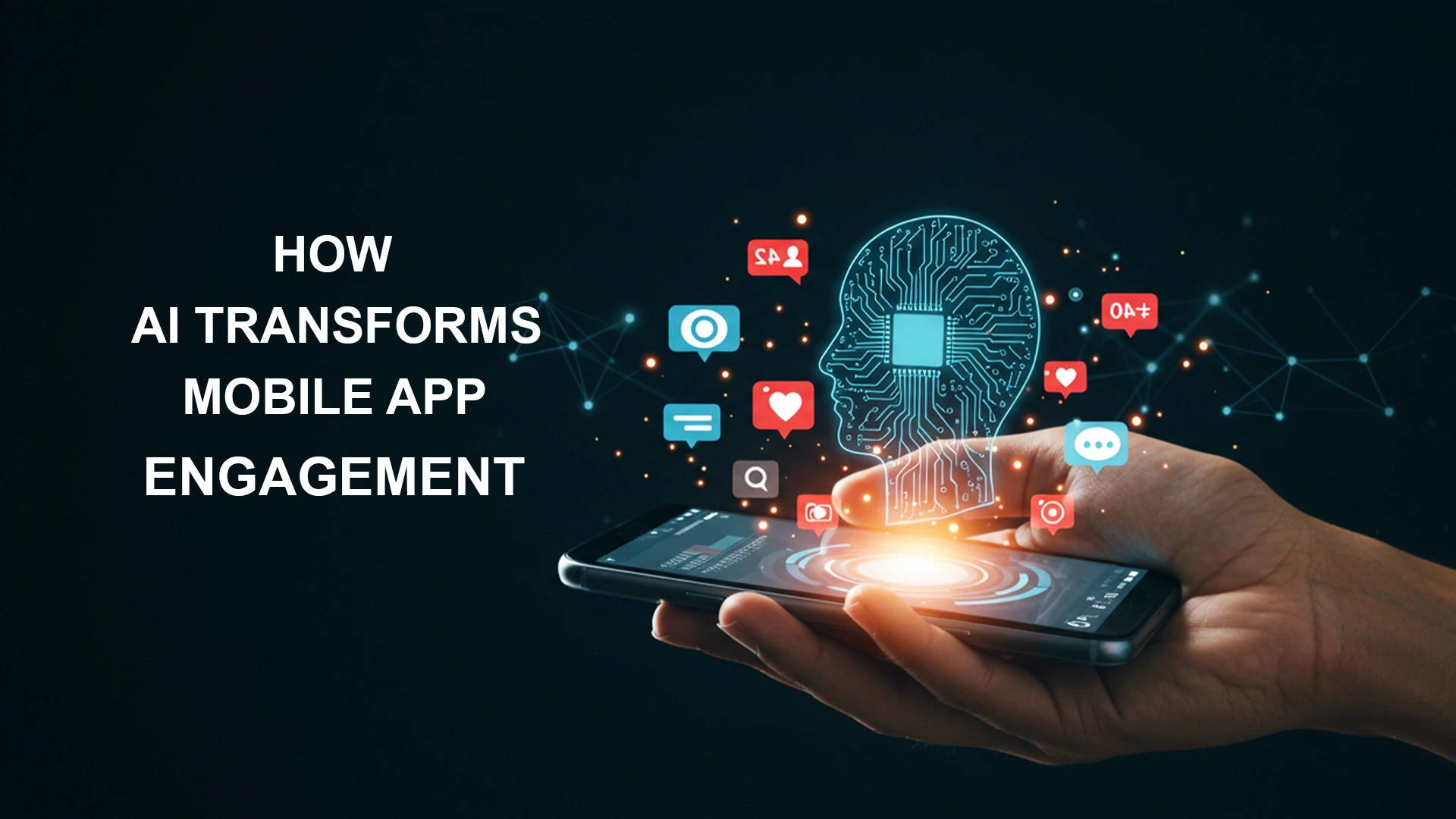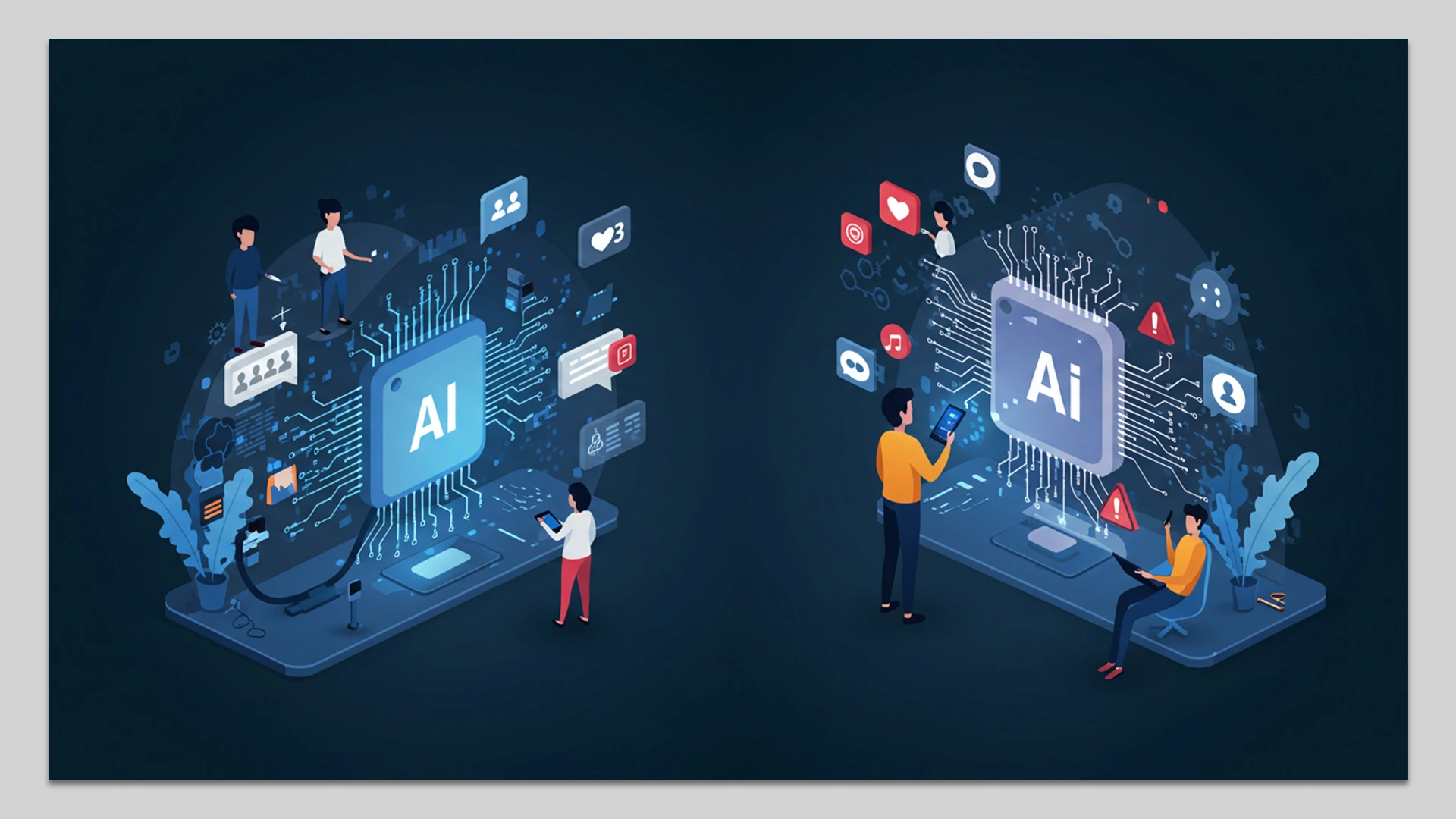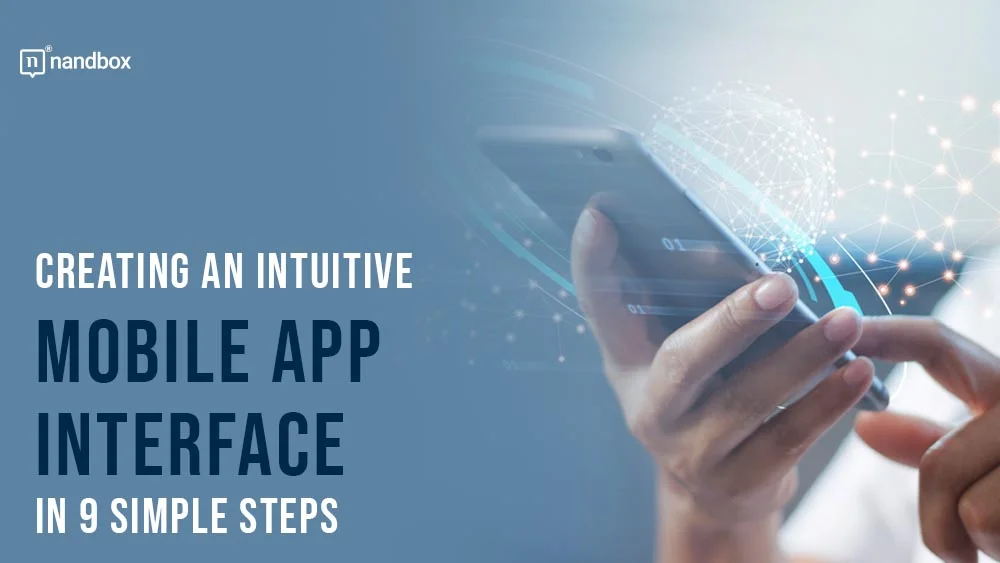In this very competitive market of mobile apps, keeping consumers involved has become more difficult than ever. An app’s success and durability depend on its ability to keep high engagement levels given millions of apps competing for attention and fast changing user tastes. Mobile apps’ interactions with and user retention are being changed by artificial intelligence. Apps can now provide very tailored experiences by means of artificial intelligence-powered solutions using sophisticated user behaviour analysis and predictive analytics. This change is about building genuine relationships with consumers in an ever more congested digital environment and to boost mobile app engagement, not only about remaining competitive.
Knowing How Artificial Intelligence Affects Mobile App Engagement
By examining user behaviour patterns, artificial intelligence generates a completely new kind of user interaction with material. This enables customized experiences that increase retention and happiness.
Main Issues in User Participation
- With average session durations of 3-7 minutes, mobile users switch between apps fast.
- Users have 40+ apps installed but often use just 18 of them.
- Handling large volumes of user interaction data to get significant insights.
- Individualization Demands: People want customized experiences over several touchpoints.
- Encouraging users to find and use fresh app features.
- Maintaining app speed and dependability under difficult features implementation defines technical performance.
How Artificial Intelligence Changes User Experience
Delivery of Individualized Material:
- Examines user choices to tailor feed suggestions
- Changes interface components depending on usage trends
- Produces personal material streams
Forecasting User Behavior Patterns:
- Predicts patterns of user behavior
- Finds possible churn hazards
- Maximizes the timing of push alerts
Automated Engagements:
- Uses chatbots to provide round-the-clock assistance
- Handles natural language questions
- Responds to user activities in real-time
Optimizing Performance:
- Tracks app performance indicators
- Finds bottlenecks in use
- Streamlines testing processes
| Artificial Intelligence Effect Measurements | Improvement in Performance |
| Marketing Return on Investment | 10-30% |
| Operational Effectiveness | 25% by 2025 |
| Rates of Conversion | 100-300% more than desktop |
AI-Driven Personalization Techniques
AI-driven personalization changes mobile applications by producing distinct experiences customized to certain user tastes and actions. These techniques use sophisticated algorithms to examine user data and provide tailored interactions, increasing retention and engagement.
Intelligent Content Suggestions
Powered by artificial intelligence, recommendation systems provide tailored material recommendations in real time by means of user interaction analysis. To generate precise user profiles, these systems investigate variables including time spent on particular features, purchase records, click patterns, and browsing history. Content suggestions come in different forms:
- Playlists tailored to fit your listening preferences
- Product recommendations in line with previous buys
- News feeds tailored to fit reading interests
- Feature suggestions inside the app depending on usage trends
- Customized push alerts at peak moments of engagement
As users engage with the app, the recommendation algorithms constantly learn and change, hence increasing suggestion accuracy by as much as 85%. Dynamic personalization helps to provide a more natural experience that keeps people interested for longer.
Targeting and Behavioral Analytics
Using artificial intelligence to examine real-time user signals, behavioral targeting generates tailored experiences depending on particular behaviors. The program monitors important behavioral indicators:
- Navigation flows and click patterns
- Frequency and session length
- Rates of interaction and feature use
- Shopping history and cart abandonment
- Time spent on particular material
This information allows for exact audience segmentation and focused material distribution. Apps employing behavioral targeting show:
| Metric | Impact |
| User Retention | +45% |
| Session Length | +35% |
| Rate of Conversion | +65% |
| Income from Apps | +55% |
The targeting algorithms create even more tailored experiences that promote continuous engagement by automatically changing material and features depending on individual user behaviour.
Increasing Participation by Means of Artificial Intelligence Features
By means of smart automation and personalization tools, artificial intelligence elements change mobile app interaction. These elements provide dynamic user experiences that change in real time to fit personal tastes and behavior.
Smart Virtual Assistants
AI-driven virtual assistants offer 24/7 automated support and job completion by means of seamless integration into mobile applications. Responding to questions with 95% accuracy, these assistants handle natural language inputs across text and audio channels. By referring to prior exchanges, advanced natural language processing preserves conversation continuity and enables contextual understanding. Modern virtual assistants take care of several duties:
- Run voice commands for hands-free app navigation.
- Finish regular tasks such as setting appointments.
- Respond to typical customer service inquiries in three seconds.
- Suggest tailored ideas depending on the user’s past.
- Run sophisticated processes using basic chat interfaces.
Optimizing Automated User Interfaces
To maximize engagement, artificial intelligence algorithms constantly examine user interaction patterns to optimize interface components. To find friction areas, the system monitors important measures including tap accuracy, navigation pathways, and completion rates. Dynamic UI optimization produces:
- Real-time change of button location depending on user activity
- Content rearrangement to emphasize pertinent features automatically
- Custom interface designs fit for personal use
- Changes in color scheme and contrast to improve visibility
- Screen flow optimization cutting job completion steps by 40%
Forecasting Mapping the User Journey
- Predict the next probable acts with 85% accuracy
- Spot possible drop-off sites before they happen.
- Recommend tailored material at the best points of travel.
- Design dynamic user flows driven by real-time behavior
- Across several touchpoints, automate journey orchestration.
- Minimize journey friction by use of proactive interventions.
Dubbing using AI Translation
Machine learning techniques enable AI-powered video translation systems to provide real-time translations of in-app material and dialogues, hence enabling users from many language backgrounds to have a unified experience. This manner you can not only generate captions but also guarantee real-time user communication. Imagine, for example, a gaming app allowing players from all over the world to converse smoothly during live gameplay, therefore breaking down language boundaries that might otherwise hinder engagement and camaraderie.
Furthermore, AI-powered dubbing systems go one step further by allowing real-time flawless voice-overs. This implies that not only may written material be translated, but people can also hear instructions or characters being spoken in their mother tongue. This makes the app interaction more human and the experience more engaging. An app that seems tailor-made for their culture and language will more likely attract users. An educational app, for instance, may utilize artificial intelligence dubbing to translate instructive videos, so guaranteeing that students may consume content without being hindered by language barriers.
Best Practices for Implementing Artificial Intelligence
Maintaining best performance criteria calls for careful consideration of data management policies in mobile apps including artificial intelligence integration.
Data Security and Privacy Issues
AI-enabled applications need clear privacy policies since they gather large amounts of user data for personalisation. Processes of data collecting include strong security measures to safeguard sensitive information from possible breaches. Here is how to include privacy-oriented artificial intelligence elements:
- Use encryption techniques for data storage
- Apply anonymization methods on personal data
- Establish obvious data use policies shown front and center
- Allow users power over data-sharing choices
- Establish data deletion plans run automatically
- Set up safe API points for data transfer
- Create multi-factor authentication mechanisms
Monitoring and Optimizing Performance
- Monitor response times for AI-powered features
- Watch server load at peak times
- Track AI process battery use
- Examine memory use trends
- Examine crash reports on artificial intelligence features
- Record rates of API call frequency
- Evaluate AI feature performance on several devices
| Performance Measure | Optimization Goal |
| Response Time | < 2 seconds |
| Memory Consumption | < 100MB |
| Effect on Battery | < 5% per hour |
| Latency of the API: | < 200ms |
| Fault Rate | < 0.1% |
Trends and Opportunities Ahead
Emerging technologies and creative ideas are driving ongoing evolution in AI-driven mobile app engagement. While offering particular integration issues, these developments open doors for improved user experiences.
New AI technologies
AI-driven predictive engagement lets apps meet user requirements even before they surface. Advanced machine learning algorithms examine behavioral patterns to start proactive interactions, hence providing appropriate solutions at the best times. This predictive capacity works with hyper-personalization elements to produce customized experiences based on:
- Behavioral Indicators: Examining mood, tone, and contextual trends
- Live-time Changes in real time Changing material distribution depending on consumption trends
- Processing environmental data points
- Multi-modal Interactions Combining text inputs, voice, and gesture
IoT integration increases these possibilities by interacting with:
- Devices for smart homes
- Wearable tech
- Vehicles linked
- Environmental monitoring devices
Difficulties and Opportunities in Integration
Implementing artificial intelligence capabilities technically calls for strategic thinking to address typical challenges:
Data Management Strategies:
- Real-time analysis via distributed processing systems
- Integration of edge computing for quicker reaction times
- Automated data cleaning systems
- Architecture of safe data storage
Performance Improvement:
- Algorithms for resource allocation
- Monitoring of battery use
- Memory use optimization
- Faster reaction times
Ethical Issues:
- Open artificial intelligence decision-making systems
- User data management systems
- Algorithms that preserve privacy
- Systems for detecting bias
By means of responsible artificial intelligence application, these solutions guarantee smooth integration and preservation of user confidence.
Should Artificial Intelligence Be Included to Include Users?
By developing really tailored experiences that draw users back, AI is changing how your mobile apps interact with them. Apps will become smarter and more attentive to personal demands, which will enable even more chances to create meaningful connections with your audience. Although employing artificial intelligence presents difficulties, the advantages of improved engagement, automated assistance, and predictive power justify investigation. Embracing these technologies carefully helps you not only keep up with trends but also invest in the future success of your app and the contentment of your customers. Personal, smart, and entertaining define mobile app engagement going forward. Using artificial intelligence properly will help you to design experiences that really connect with your consumers.
nandbox App Builder
The nandbox App Builder helps companies to use artificial intelligence in mobile app development to its maximum capacity without writing a single line of code. In line with the trends mentioned, nandbox offers built-in capabilities that allow automated engagement tools, smart content delivery, and tailored user experiences—all vital in the competitive app market of today to boost mobile app engagement.








